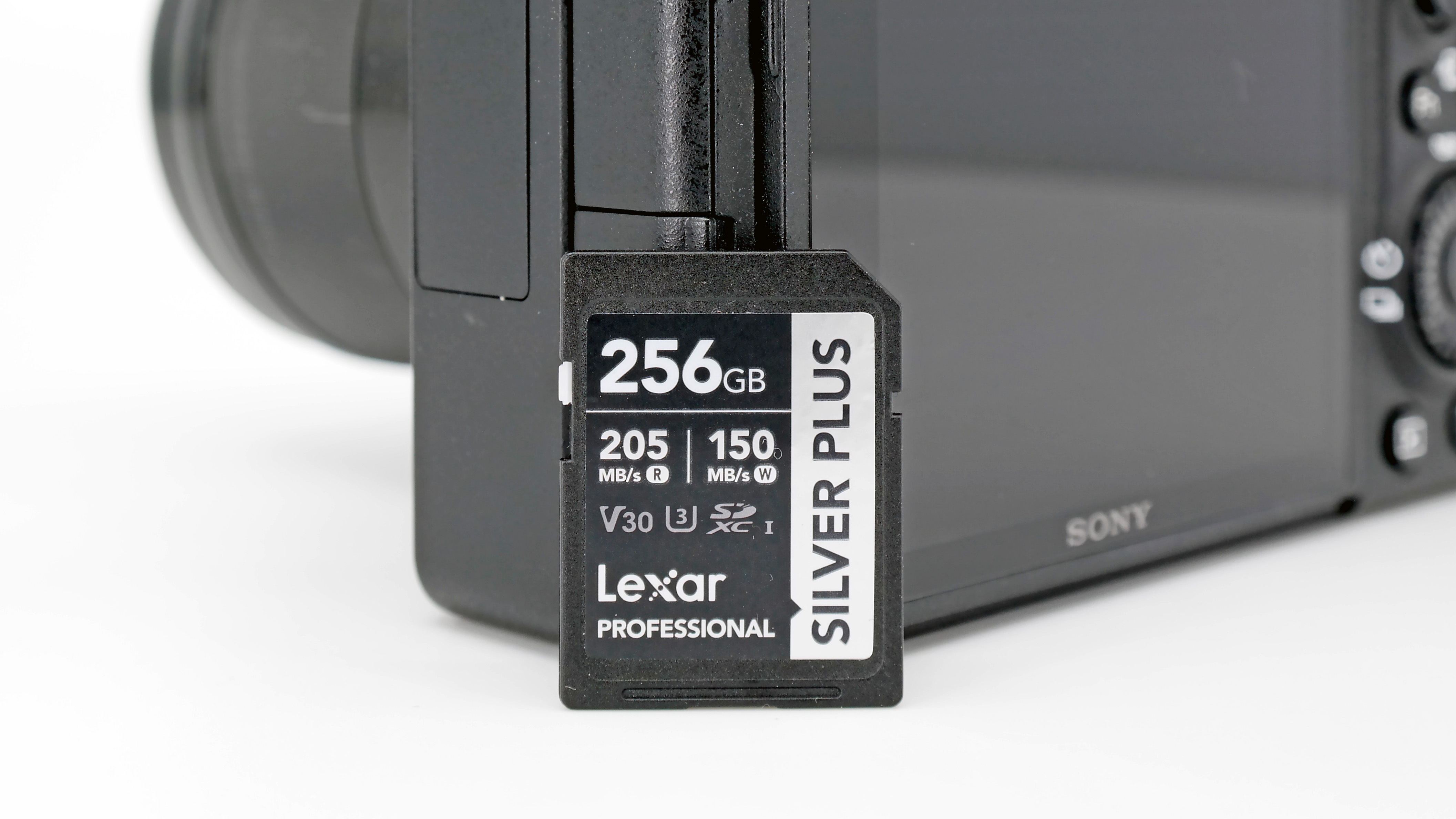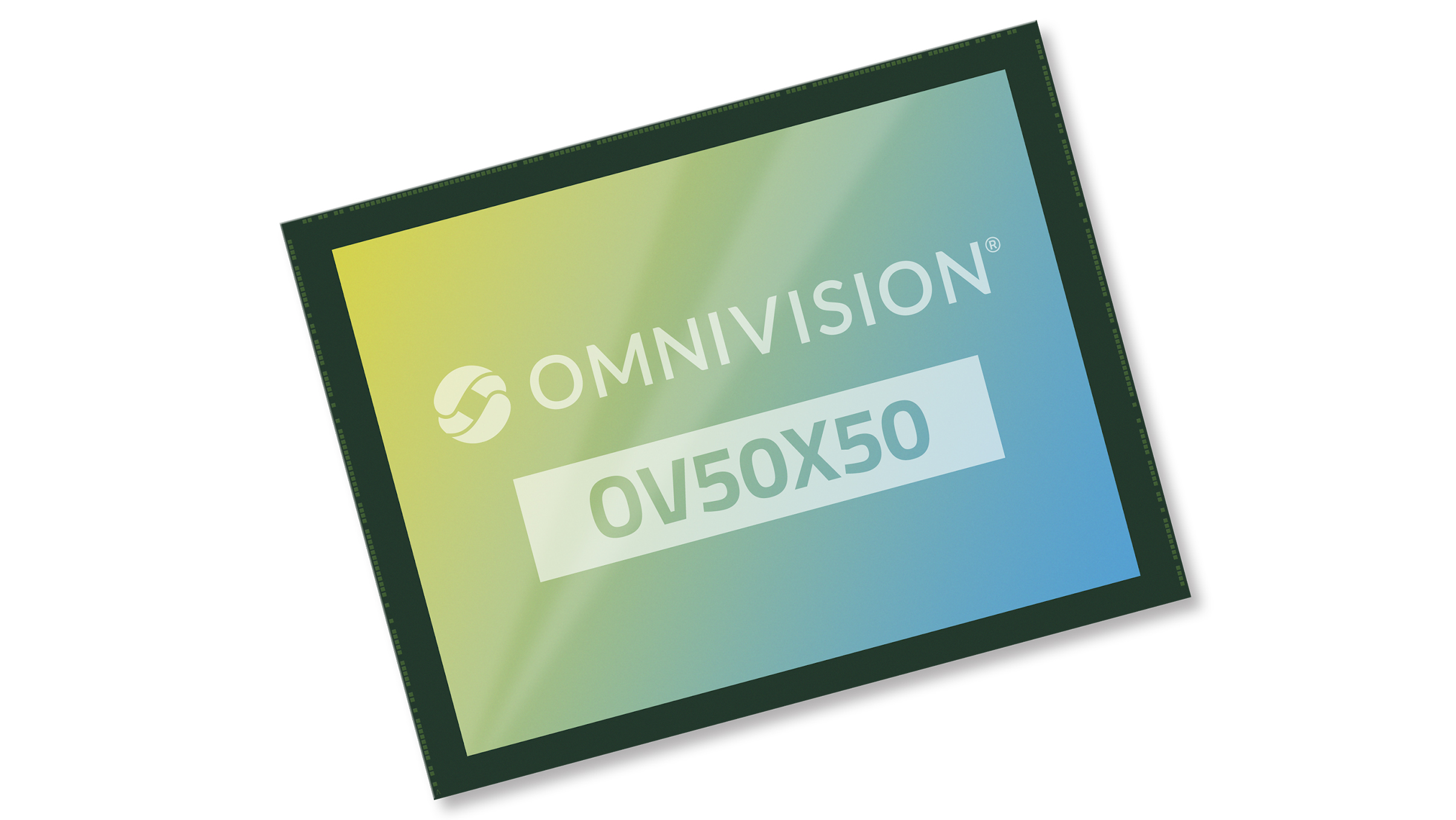Digital Camera World Verdict
The Lexar Professional Silver Plus SDXC card offers respectable performance while also being affordable. It comes in lots of capacities and all are competitively priced. Our mid-range 256GB test card handled everything we could throw at it, although we couldn't get close to the advertised 205MB/s read speed, and in-camera write speeds were also well down on the advertised 150MB/s maximum. Even so, this is still a versatile card that offers good value.
Pros
- +
Good computer transfer speeds
- +
Well priced
- +
Lots of capacity options
Cons
- -
205MB/s read speed tough to achieve
- -
Disappointing in-camera write speed
- -
64GB card slower than other capacities
Why you can trust Digital Camera World
Lexar's range of SDXC cards can be confusing at first glance, so to try and clarify things: at the top of the tree are Gold-series cards, while Blue-series cards represent the entry-level offerings. Silver-series cards occupy the mid-range, and within this series are Silver Pro, Silver Plus, and Silver.
Silver Pro is the upper mid-range choice, being a faster UHS-II card. Silver Plus and Silver are both UHS-I cards and are almost identically specified: both have an advertised 205MB/s read speed, but while Silver Plus boasts a claimed 150MB/s max write speed, Silver cards are slightly slower at 140MB/s.
Read more: Lexar Professional Silver Pro SDXC memory card review
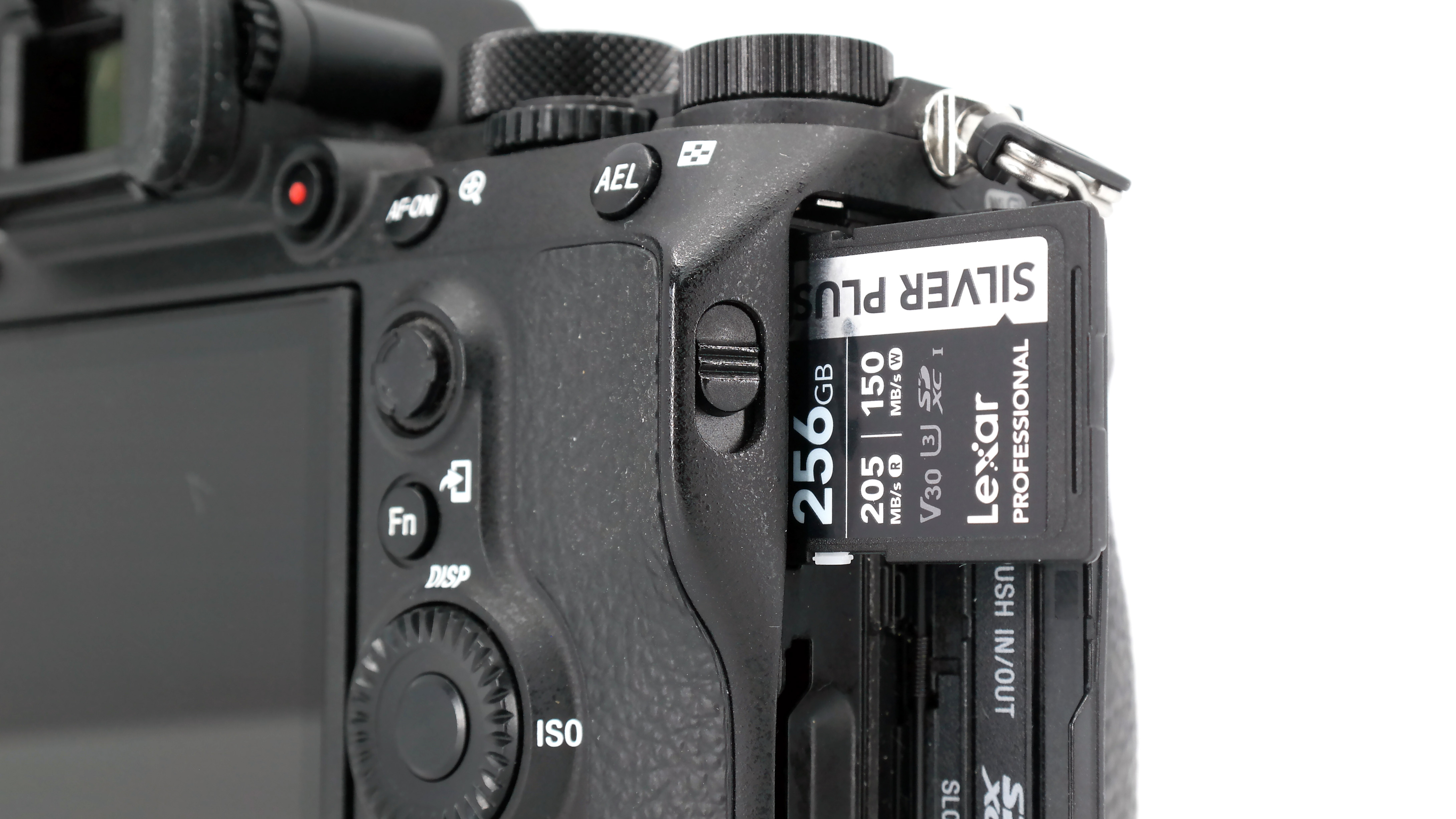
Lexar Silver Plus: Key features
Silver Plus cards are available in 1TB, 512GB, 256GB, 128GB and 64GB capacities. All but the 64GB varient have the claimed 205MB/s read and 150MB/s write speed, however the 64GB card has a reduced max write speed of 100MB/s. All capacities carry a V30 speed rating, so they should be capable of sustaining a minimum 30MB/s write speed when shooting video. For reference, the top Silver-series offering - Silver Pro - has a V60 rating, though Lexar still claims the V30 Silver Plus is capable of recording 4K video at 60fps.
According to Lexar, Silver Plus cards are "built for durability" and are wear proof (define that?), temperature-proof (they're rated to operate between -25℃ and 85℃), x-ray-proof, vibration-resistant, magnetic-proof and shock-proof.
Lexar Silver Plus: Performance
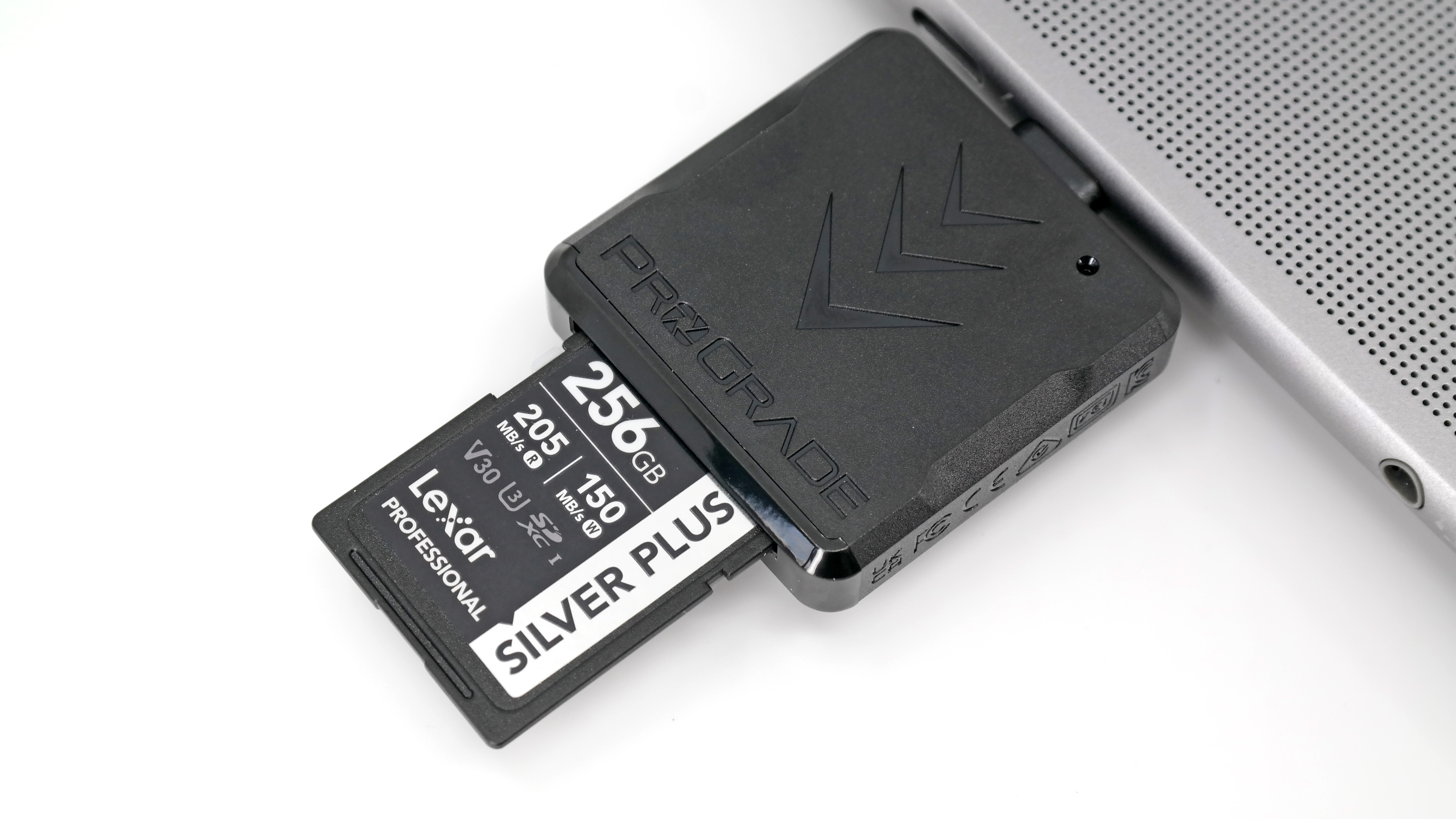
We test memory cards in real world use cases, but to get the best indication of a card's maximum possible transfer speeds, you need to use memory/storage benchmarking software like Crystal Disk Mark. This revealed a maximum 167.28MB/s read speed - some way short of the claimed 205MB/s, though our best write speed result of 156.06MB/s was slightly above Lexar's advertised 150MB/s.
These speeds were attained using a UHS-II SD card reader from ProGrade Digital, plugged into a USB4 port on a fast laptop, so none of our testing hardware should have been anywhere close to bottlenecking the memory card.
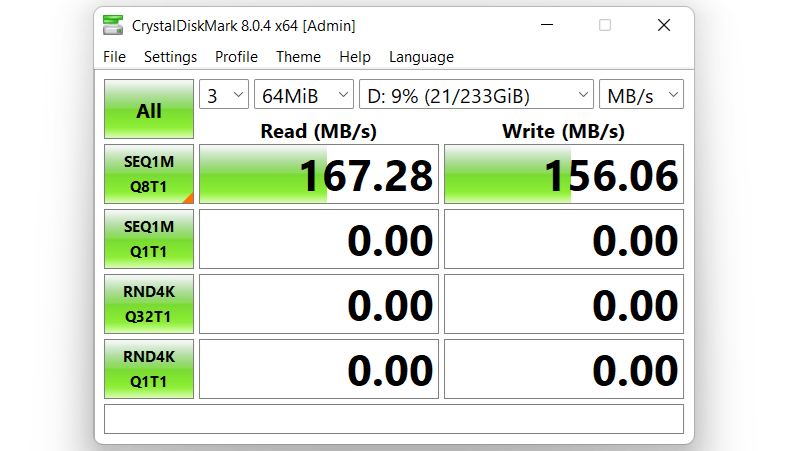
Moving to real-world file transfer testing, we copied a single large video file to and from the Silver Plus card to get an idea of the best possible read/write speed you're likely to see when offloading footage from the card. We also run the same tests using a folder containing hundreds of small image files - a scenario likely to produce slightly slower transfer speeds. In both the video and the multiple image transfer tests, our maximum sustained read and write rates were around 10-15% slower than the speeds recorded in Crystal Disk Mark:
| Header Cell - Column 0 | Read | Write |
|---|---|---|
| Large single file | 156MB/s | 135MB/s |
| Multiple small files | 142MB/s | 132MB/s |
To test real-world in-camera performance, we broke out our Sony a7R III and shot a continuous burst of 31 uncompressed RAW stills in the camera's Hi+ burst mode (the maximum number of stills before hitting the internal buffer limit). This 2.47GB burst of shots then took approximately 30 seconds to transfer from the camera's internal buffer to the Silver Plus card, equating to a write speed of 84.31MB/s - some way short of Lexar's claimed 150MB/s max write speed. We've used the same camera to test other SD cards and it's definitely capable of unloading its buffer more quickly than we experienced with the Silver Plus, implying the issue isn't related to the camera.
We also shot some 4K video at the camera's maximum 100Mbps bitrate - we encountered no perceivable glitches or dropped frames.
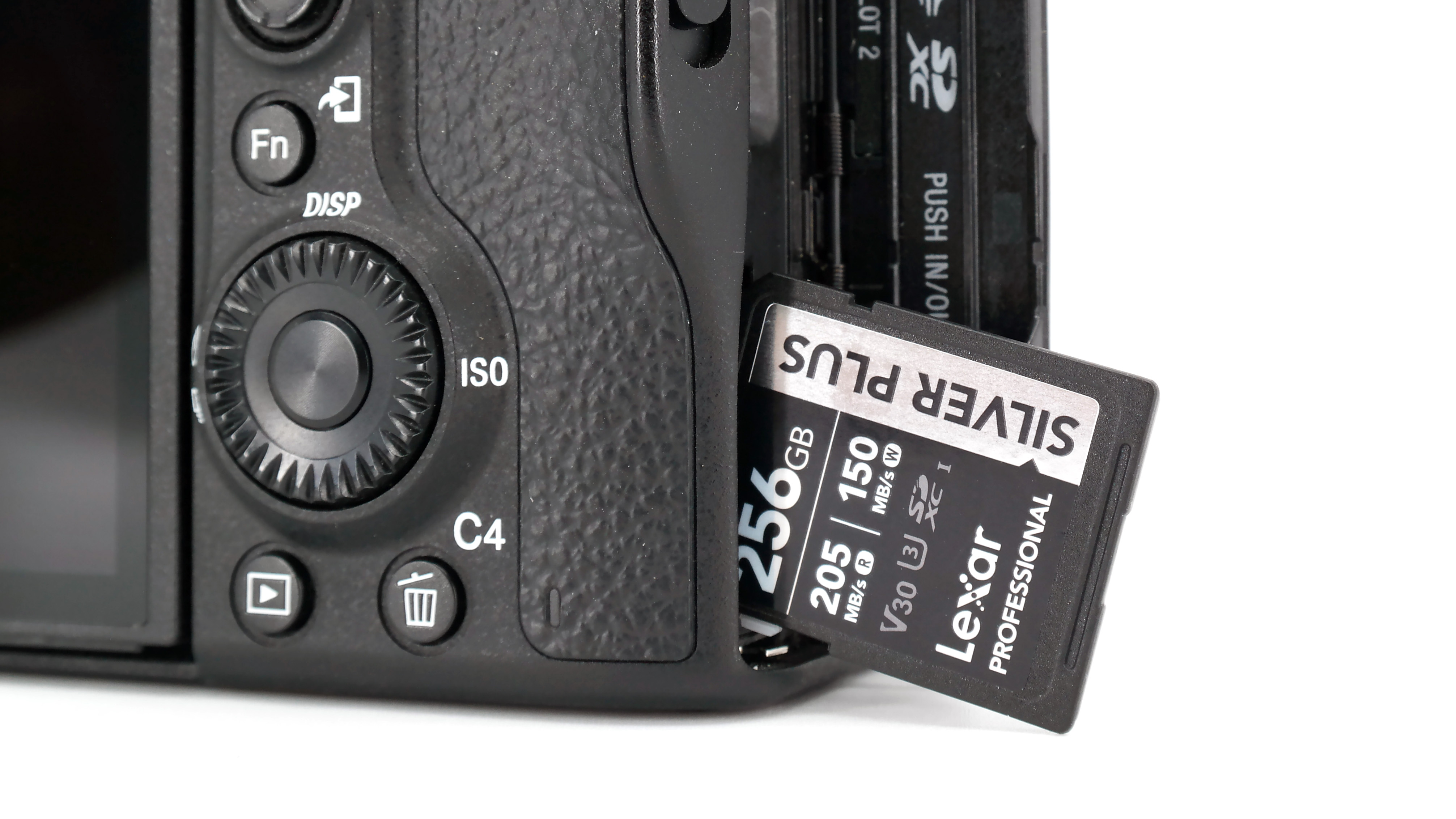
Lexar Silver Plus: Verdict
At the time of writing (August 2024) a 256GB Silver Plus card can be had for around $35 USD, while the regular Silver (non-Plus) card is barely cheaper at $34. This compares pretty well to other UHS-I cards from major brands with similar advertised read/write speeds.
It's a pity we weren't able to get close to the advertised 205MB/s read speed, and our tested in-camera write speed was way less than the quoted 150MB/s. However, the Silver Plus card easily handled recording high bit-rate 4K video, and it performed well when transferring images and video to and from a computer.
Overall, the Lexar Professional Silver Plus SDXC card offers respectable performance at an accessible price: it's a good-value SD card.
Read more: for more choices check out our top picks for the best memory cards for your camera - SD, microSD, CF, and XQD, and for getting the best speeds on your laptop the best memory card readers
Ben is the Imaging Labs manager, responsible for all the testing on Digital Camera World and across the entire photography portfolio at Future. Whether he's in the lab testing the sharpness of new lenses, the resolution of the latest image sensors, the zoom range of monster bridge cameras or even the latest camera phones, Ben is our go-to guy for technical insight. He's also the team's man-at-arms when it comes to camera bags, filters, memory cards, and all manner of camera accessories – his lab is a bit like the Batcave of photography! With years of experience trialling and testing kit, he's a human encyclopedia of benchmarks when it comes to recommending the best buys.
